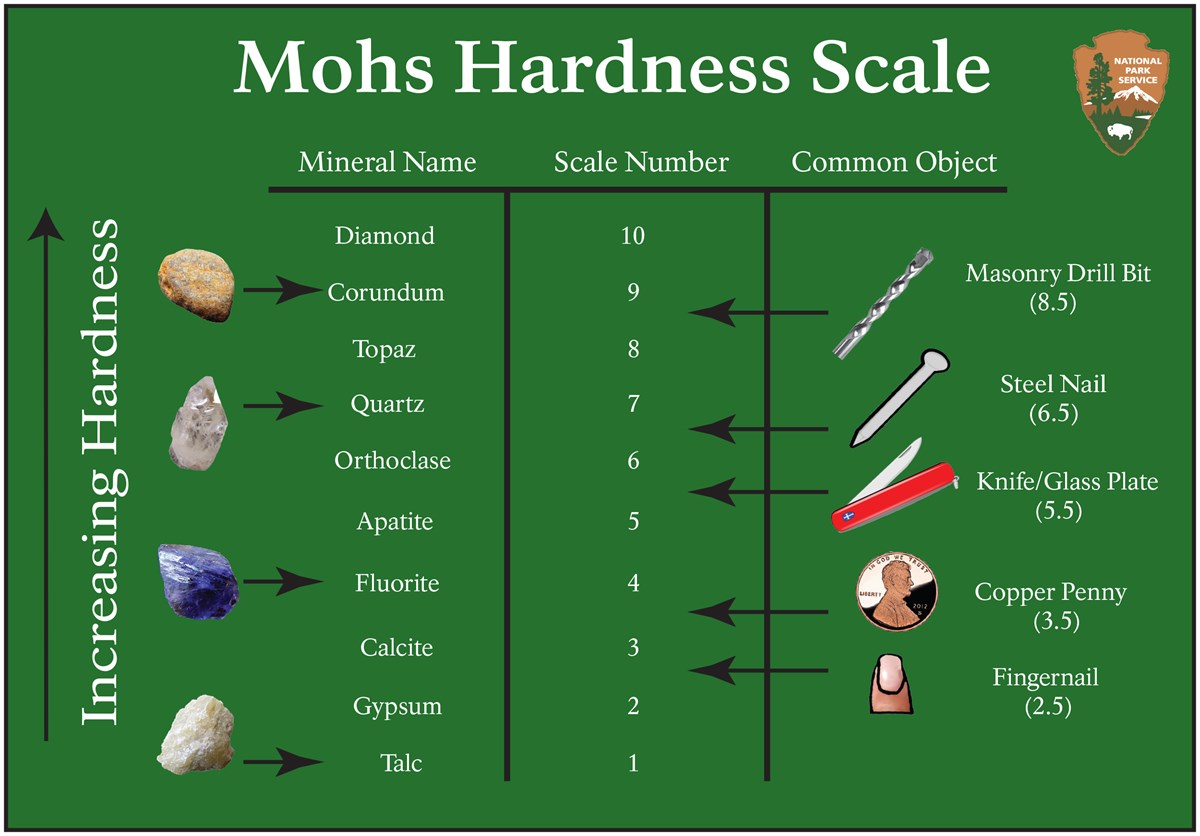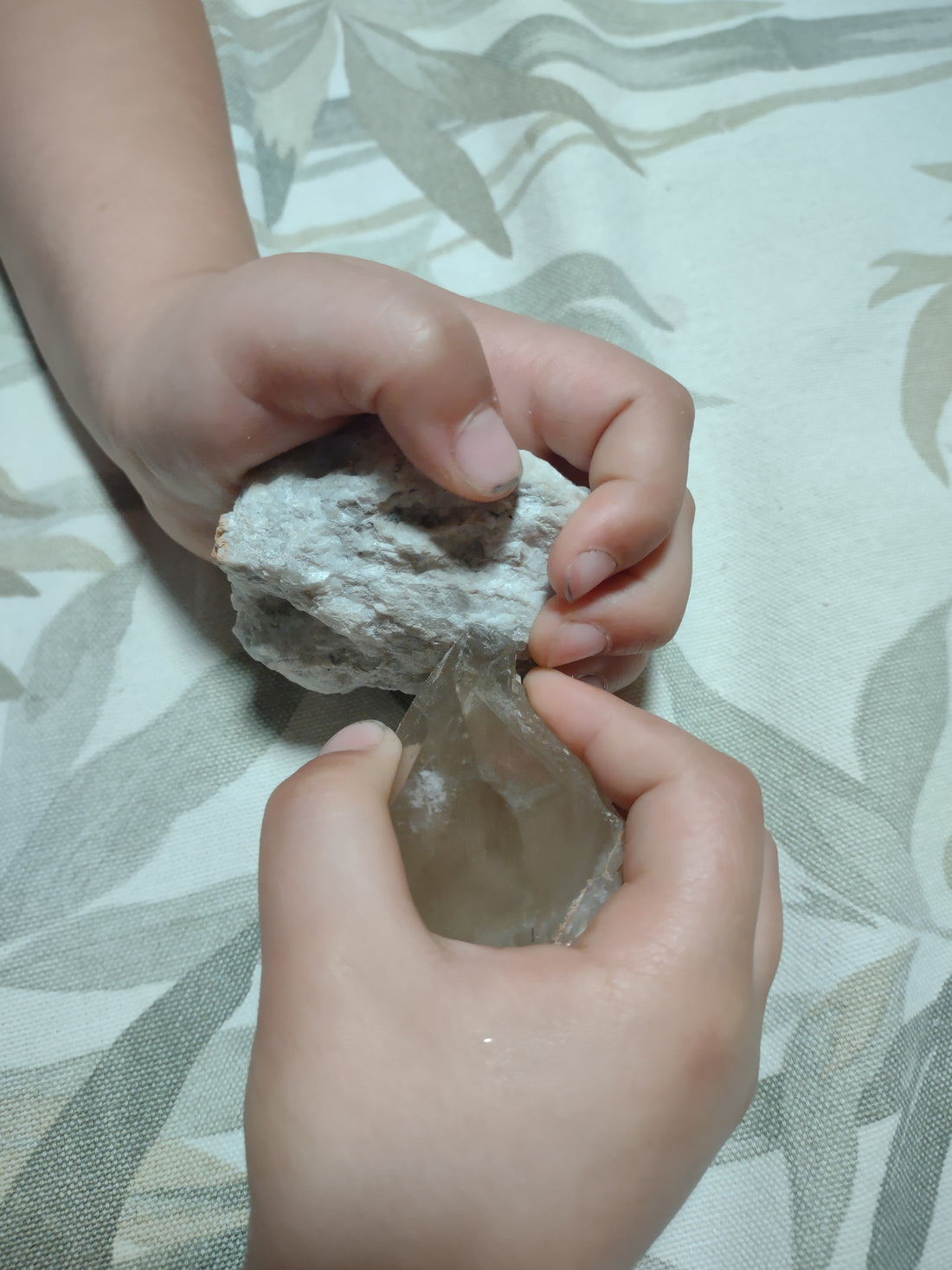Designed so that you could test the hardness of your rocky finds at home or in the field, the Mohs Hardness Scale is a quick way to find out how tough your mineral is compared to others.
Why should you care about how hard your mineral is? It will help you identify what you have in your hand when you come across something new!
Friedrich Mohs developed the scale in 1812. The scale goes from 1 to 10, listing some common minerals at each number. He set soft talc, which you can scratch with your fingernail, at 1. He set diamonds at 10 - they're the hardest and can scratch all other minerals.

There are ways you can do a quick and dirty test for hardness with the objects you have around your home or just with the rocks themselves. If you have two different minerals in your hands, you can attempt to scratch one using the other one. The one that gets scratched would be considered softer on the Mohs scale, and would have a lower number.
You can also use other things to scratch a mineral that you may have handy... like your fingernail! With a hardness of 2-2.5, if your nail can scratch it, then it must be pretty soft. A pocket knife blade has a hardness between 5-6. A piece of quartz has a hardness of 7.
The National Park Service has a great article and image here:

Amazon has a nice kit that has mineral examples and things to use to test them (I may get a small commission, at no additional cost to you, if you purchase through these links): Mineral Science Kit
Some serious folks use special picks that have set hardnesses to scratch minerals, but these are expensive: Mineral Science Test Kit
What if you're new to identifying rocks? National Geographic for the win! This mineral and rock memory and bingo game makes learning fun: Gemstone Game Kit

